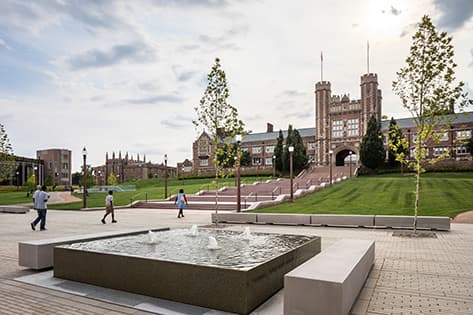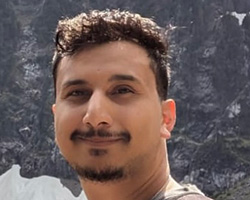Novel strategy could boost visual information in geospatial images
Nathan Jacobs’ lab makes strides toward solving tasks

Geospatial modeling uses various approaches to encode information about locations and regions from satellite images and other data, but in some of those approaches, important information gets lost. Computer scientists in the McKelvey School of Engineering at Washington University in St. Louis have developed a more efficient method to supplement the location encoding with rich image features, making the information more available for downstream tasks, such as computer vision.
Aayush Dhakal, a doctoral student in the lab of Nathan Jacobs, professor of computer science & engineering, and a team of researchers recently developed a solution that goes a step beyond the state-of-the-art contrastive learning known as SatCLIP, which takes ground and satellite images associated with a GPS coordinate and aligns them to learn the image-based features. The Jacobs’ lab’s new strategy, Retrieval Augmented Neural Fields for Multi-Resolution GeoEmbeddings (RANGE), makes up for the information lost in that process through three key ideas.
“We have a database with a large number of satellite images that is spread across the ground,” Dhakal said. “For a given GPS coordinate, we directly estimate which image from our database is likely to be the closest match for that coordinate and add that image feature as an additional feature into our representation.”
In addition, the RANGE strategy takes advantage of SatCLIP and other models’ ability to learn by capturing a large percentage of unique information obtained from aerial vision with a small number of satellite images. Finally, RANGE uses both text-based and spatial alignment to estimate the visual features of a given location using an outside database of image features.
By evaluating their method across a variety of tasks, the Jacobs team found that RANGE outperformed existing state-of-the-art models by up to 13% on classification tasks.
“Our method is efficient, robust and multiscale,” Dhakal said. “We hope our insights and results substantiate our recommendation of using RANGE as a general-purpose location encoder for geospatial tasks.
“What’s exciting about RANGE is that it is a better location encoder that integrates image features more directly,” Jacobs said. “SatCLIP loses features. We found a way to combine this neural field encoder representation and the satellite imagery features, which gives you a better location representation without the expense of having to use imagery everywhere. We can use a small set of images instead of images instead of everywhere on earth.”
Dhakal A, Sastry S, Khanal S, Ahmad A, Xing E, Jacobs N. RANGE: Retrieval Augmented Neural Fields for Multi-Resolution Geo-Embeddings. Presented at the Conference on Computer Vision and Pattern Recognition, June 11-15, 2025, in Nashville, TN.
This research was supported by funding from the Taylor Geospatial Institute and the WashU Geospatial Research Initiative.
The code is available at https://github.com/mvrl/RANGE.





